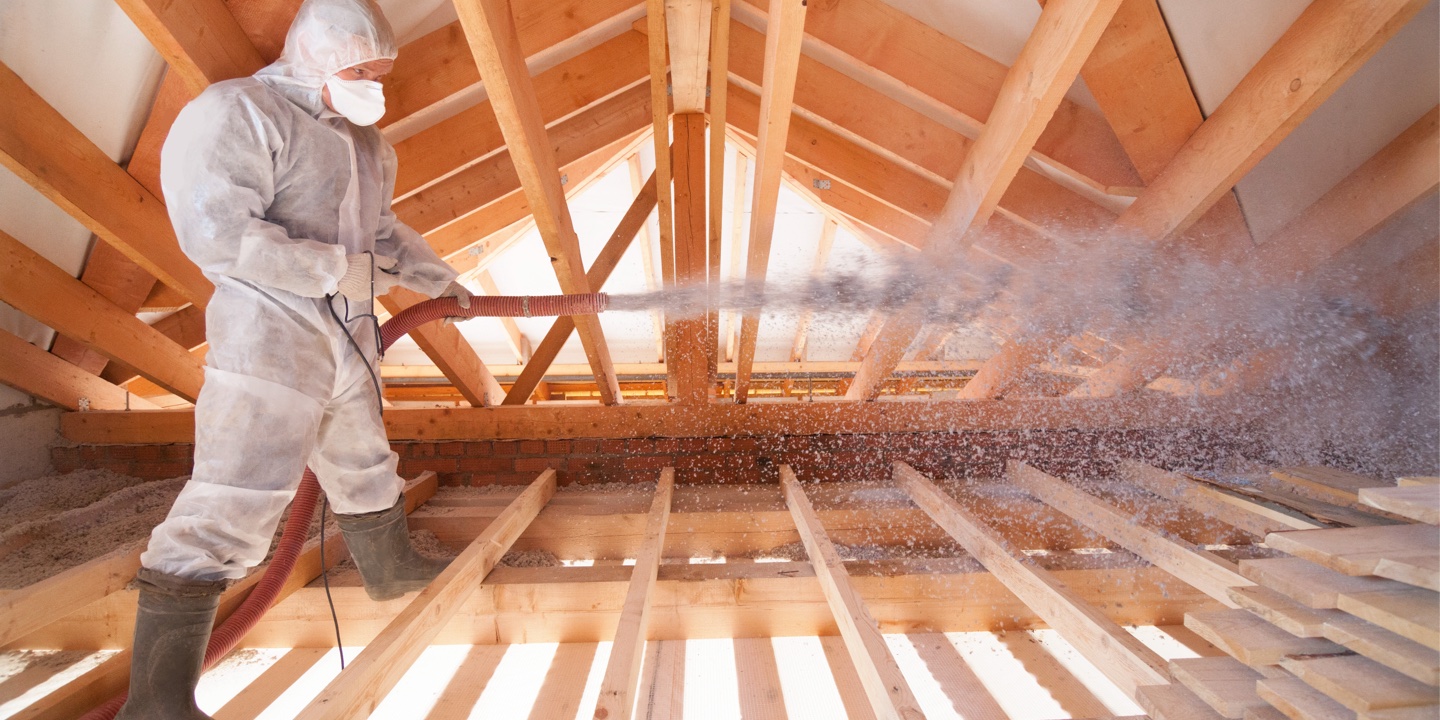Finding out which places in your home would benefit the most from insulation is difficult on its own. But what about the different types of insulation? With various different options for each budget range and area, it can feel like a daunting task to pick the insulation that best fits your home. We’re here to make this super beneficial home upgrade less of a hassle. By giving you what you need to know about each type of insulation and what it can do for your home, you’ll be prepared when it comes time to budget and install some insulation in your family’s home.
Blanket batt & roll
The most well-known kind of insulation is the blanket batt and roll. Most often a signature pink color, this kind of insulation is usually made out of fiberglass, mineral wool or plastic/natural fibers. The best place to install this into your home is in your unfinished walls, seeing how it comes in long sheets of insulation. This includes your foundation walls, for example, in your attic. You can also put this in your floors and ceilings to protect rooms that may have weather-affected or weather-dependent temperatures, like rooms over garages or porches, in order to keep the room temperature at a comfortable level despite the harsh weather outdoors. And the best part about this type of insulation is that you can install it on your own at a relatively inexpensive price. You can easily place this in areas with standard stud and joist placing, free from obstructions.
Foam board or rigid foam
Made out of polystyrene, polyisocyanurate or polyurethane, foam board or rigid foam insulation is a rigid board that can range in size and width depending on what your home needs. Typically, foam boards are placed between unfinished walls, floors, ceilings and unvented low-slope roofs, as they can cover large areas efficiently with varying size. Foam boards can even be used in exterior installations if they have the proper weatherproof facing, as they are the most sturdy when it comes to facing the weather-exposed outdoors. In order to install this on an interior scale, you must have a ½ inch gypsum board or another similar, building-approved material for fire safety, so there aren’t any safety hazards created with improper installation. High insulating value for a relatively thin layer of insulation that can also block thermal short circuits when installed over frames and joints can be a great advantage over other forms of insulation. In addition, it could be a great option if you’re looking for a type of insulation that can cover an otherwise puzzling, hard-to-cover obstacle in your wall, ceiling or floor.
Rigid fibrous or fiber insulation
Looking like a condensed sheet of fiber, fiber insulation can be made out of fiberglass or mineral wool, similar to blanket batt & roll with more of a rigid structure. It’s best for ducts in unconditioned places, and other such places that require insulation that can withstand high/harsh temperatures. You can perform a fiber insulation installation for your home all on your own simply by fitting foils, films, papers, or a bubble-form (for irregular places) through wood frames, joists, beams, and studs. If you do go with fiber insulation, it fits great between joists, rafters, beams and frame studs. Fiber insulation is the most suitable and effective for framing at standard spacing, and when spaced out correctly, is the most efficient form of insulation for preventing any downward heat flow in areas that need to keep the heat away from floors or ceilings exposed to the outdoors.
Sprayed Foam or Foam-in-Place
Spray foam insulation is a great option for already finished areas of your home. It fits great in enclosed existing walls, new open wall cavities and unfinished attic floors. It has a relatively simple application, applied either by using small containers for targeted spots or in large quantities as a foam-in-place, spraying over an entire area. Sprayed foam is also another great option for small crevices, problem areas or other such obstructions that might be big enough to let your heating out and cold air into your home, thereby disrupting your family’s desired temperature, while also being small enough not to need a large area of other kinds of insulation.
Loose-Fill and Blown-In
Loose-fill or blown-in insulation is the kind of insulation we energy professionals at Revise use the most to keep our customers’ homes cozy and energy efficient. Loose-fill insulation is made out of either cellulose, mineral wool or fiberglass, and it is great for unfinished attic floors, open wall cavities (old and new) and other miscellaneous hard-to-reach places. Professionals, like our team here at Revise, will carefully blow or pour the insulation into place, making sure it covers every nook and cranny to prevent any temperature loss. Loose-fill is a great option for adding even more insulation to previously finished or insulated places, odd or irregular shaped spaces or any other obstructions, making it our personal favorite as it’s the most flexible and easy to cover even the toughest areas.
As energy professionals, we want to continue to emphasize how important insulation is, no matter what kind, to keeping your home comfortable. Insulation can help you stay energy efficient, reducing the money you’d be spending if you were making your heating system work overtime trying to compensate for areas in your home that let the cold air in and the hot air out. As a Mass Save® partner, we can offer you up to 75% — 100% off your potential insulation costs — so there’s no better time to act on keeping the heat in this winter than right now. Call us today at (800) 885-7283 and schedule an appointment with our energy professionals so we can help you save big on your bills and so you can focus that money on other things this upcoming holiday season.
Some restrictions apply and offers are subject to change or cancellation. Visit MassSave.com/HEA for full details.





